|
LETTUCE PRODUCTION
| |
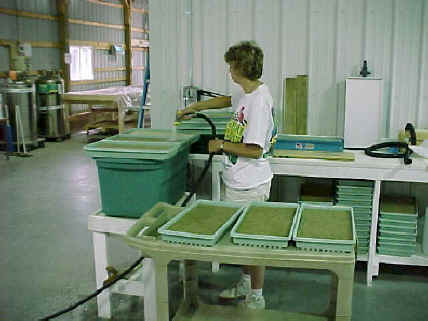 |
The rockwool slabs (holding 7 by 14 plugs) are wetted with tap water. The slabs were placed in plastic trays for easy transportation. |
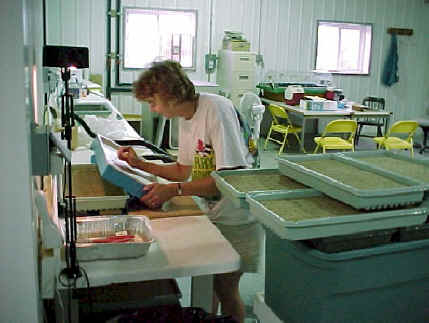 |
Using a small vacuum seeder, the (naked) lettuce seeds are sown in the rockwool slabs. Little suction holes in the seeder tray line up with small indentations on the rock wool slab. |
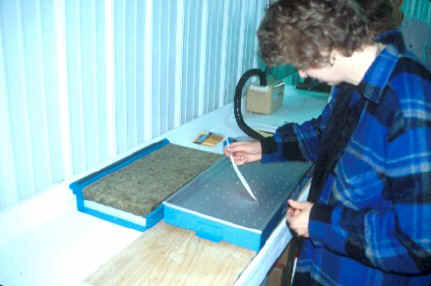 |
Care is taken to make sure only one seed is positioned over each suction hole in the vacuum seeder. This occurs just before the vacuum is released after the seeder tray is placed over the rock wool slab. |
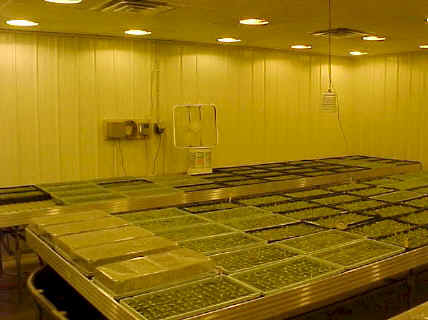 |
The plastic trays with rockwool slabs are placed on ebb and flood benches in the growth room. The plastic trays are covered with transparent covers for the first three days after sowing to maintain high humidity levels. |
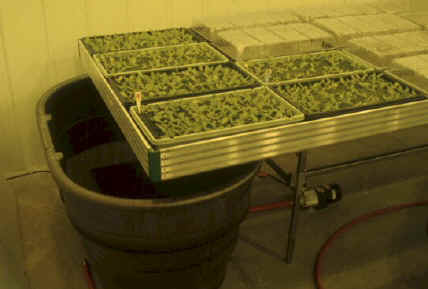 |
The seedling trays are placed on an ebb and flood table in the growth room and bottom irrigated. The nutrient solution tank is located directly underneath the bench. Some of the seedling trays in this picture are covered with transparent covers to maintain high humidity during germination. |
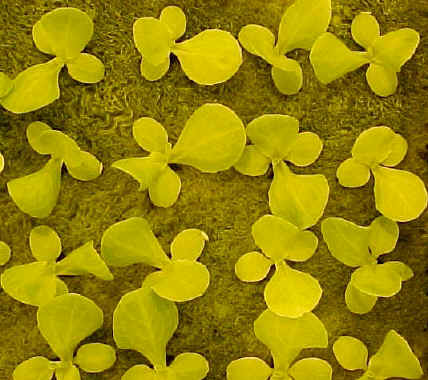 |
Close-up of lettuce seedlings growing in a rock wool slab. |
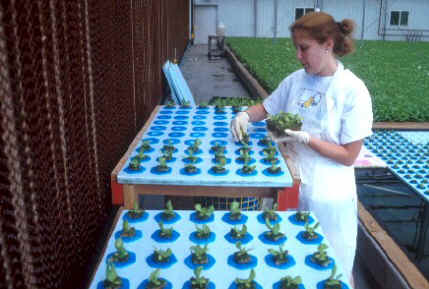 |
After 12 days, the seedlings are taken out of the growth room, transported to the greenhouse, and transplanted onto Styrofoam™ floaters (2 by 4 feet). Blue plastic rings hold the individual seedling cubes in an upright position. These rings allow for bigger hole sizes in the Styrofoam™ floaters, reducing root damage during the respacing operation. |
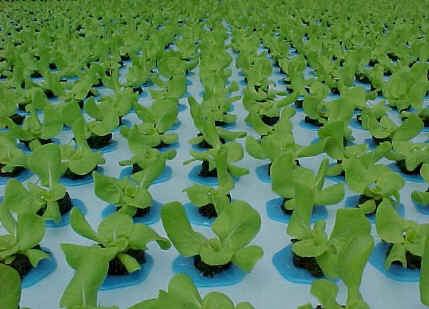 |
Close up of seedlings on StyrofoamTM floaters in the greenhouse. |
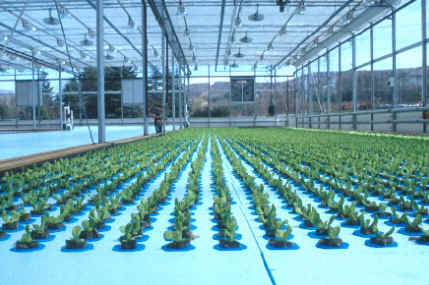 |
The Styrofoam™ floaters (2 by 4 feet and holding 60 [6 by 10] seedlings in a rectangular spacing pattern) are placed on top of the nutrient solution in one of the four ponds. |
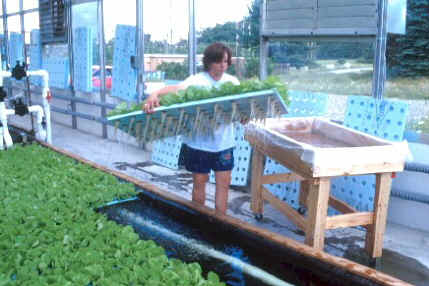 |
After 10 days at the initial greenhouse spacing, the plants start to crowd each other and they have to be respaced. In this picture, a Styrofoam™ floater with 60 plants is taken out of one of the ponds. |
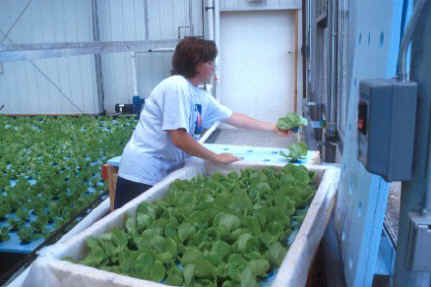 |
The final plant spacing is 21 (3 by 7) plants on a 2 by 4 feet Styrofoam™ floater in a rectangular spacing pattern. In this picture, the plants are transferred from a floater with the initial spacing density (7.5 plants/square foot) to a floater with the final spacing density (2.63 plants/square foot). |
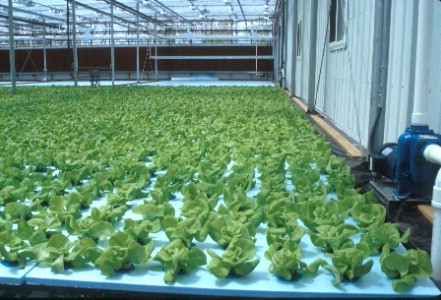 |
The plants remain at the final spacing for another 14 days. After a total of 36 days, the plants are ready to be harvested. |
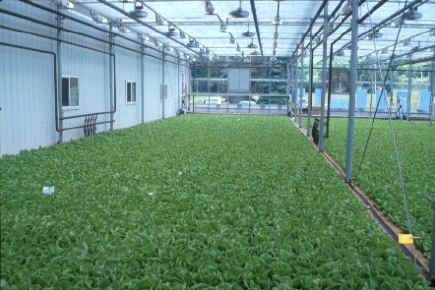 |
At an age of 36 days after seeding,
the plants are ready to be harvested. Each lettuce head weighs at least 5
ounces (150 gram).
|
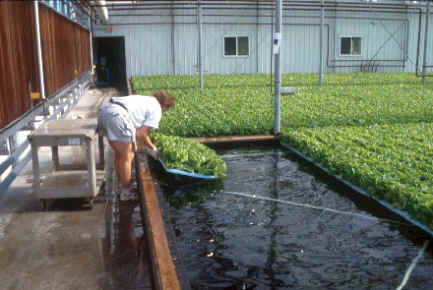 |
Harvesting 36-day old lettuce plants. |
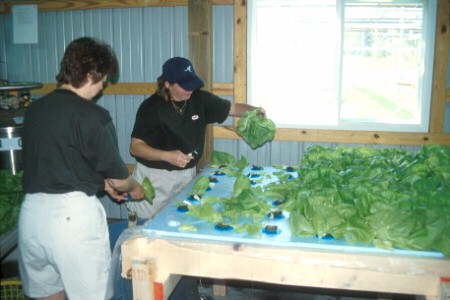 |
After the lettuce are harvested, the head is cut from the roots and placed in a plastic bag. |
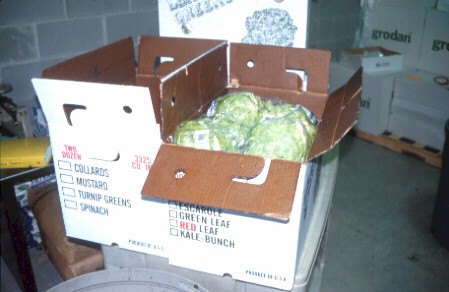 |
The freshly harvested lettuce heads are placed in cardboard boxes (three layers of eight heads). The boxes are placed on pallets (42 boxes per pallet) and the pallets are placed in the cold storage room (at kept at 33 – 38ºF) for at least 24 hours to remove the so-called field heat. |
| Back to FH Greenhouse | |